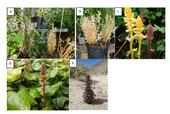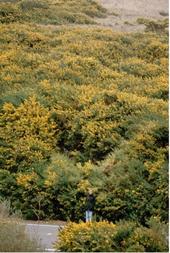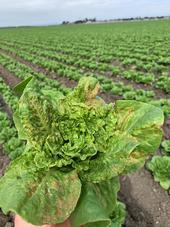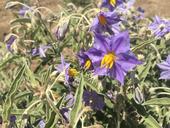- Author: Pershang Hosseini
- Author: Alison Colwell
- Author: Bradley Hanson
- Posted by: Gale Perez

The Orobanchaceae family comprises 270 holoparasitic species that cannot photosynthesize. Instead, they rely entirely on the host plant roots for nutrition, and can produce great numbers of minute, dust-like seeds that last for years in the soil. This family contains some of the most serious agricultural parasites in the genera of Phelipanche and Orobanche some of which are present in California. The different species can be distinguished by the degree of branching of their stems and presence/absence of bracteoles at the base of the flower Orobanche species have unbranched stems and no bracteoles, while Phelipanche species feature branched stems with bracteoles. In this paper, we discuss three...
- Author: Mackenzie Patton
- Posted by: Gale Perez

The Invasive Pest Spotlight focuses on relevant or emerging invasive species in California. In this issue we are covering brooms, a group of invasive shrubs.
Invasive Broom facts
Brooms are upright shrubs in the legume family that typically produce small, yellow, pea-shaped flowers. Shrubs range from 3 to 10 feet tall. They produce flowers from mid spring to summer and produce seed pods in late summer. All brooms are prolific seed producers, with a single shrub producing as many as 2,000 to 3,500 pods containing up to 20,000 seeds.
While brooms are attractive plants, they grow in dense stands that outcompete many native plants....
- Author: Richard Smith
- Posted by: Gale Perez

Richard Smith is the University of California Cooperative Extension Monterey County Vegetable Crop Production and Weed Science Farm Advisor. He also covers Santa Cruz and San Benito counties.
Weeds are an important host of Impatiens Necrotic Spot Virus (INSV) in the Salinas Valley. It is a tospovirus that is spread primarily by western flower thrips (Frankliniella occidentalis). It has a wide host range of over 600 species of plants, including vegetables such as lettuce, tomatoes and peppers and many ornamentals. In the Salinas Valley, many weed species serve as a...
- Posted by: Gale Perez

| EVENT: | What Makes a Weed a Weed? The Case of “Weedy” Rice in California webinar |
| DATE: | Tuesday, November 16, 2021 |
| TIME: | 11:30 AM-12:00 PM (Pacific Time) |
| SPEAKER: | Whitney Brim-DeForest, University of California Cooperative Extension (UCCE) County Director for Sutter-Yuba Counties and UCCE Rice... |
- Author: Guy B Kyser

Silverleaf nightshade (Solanum elaeagnifolium) is a perennial subshrub native to the American Southwest, southern states, Mexico, and South America. It's a member of the Solanaceae, thus a relative of tomatoes, potatoes, tomatillos, eggplant, and tobacco, as well as weeds such as tree tobacco, black nightshade, and hairy nightshade.
The photo below shows silverleaf nightshade spreading in a recently disked field near UC Davis. Note that it's pretty much the only plant present: it can regrow from small rhizome fragments, and is very tolerant of hot and dry conditions. It's also poisonous to livestock. It is a listed noxious weed in many states and in a number of Mediterranean-climate countries...


